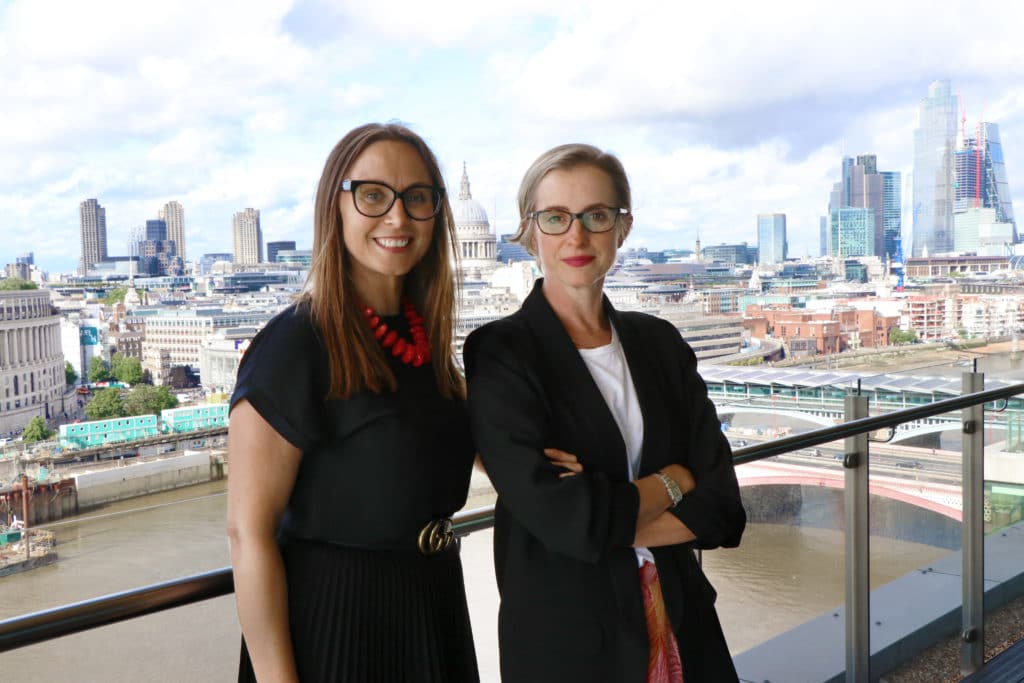Digital carbon footprints: a crucial consideration for the media industry and its advertisers

In 2019, UK advertisers emitted more than 186 metric tonnes of CO2, and it has been estimated that advertising added a staggering 28% to the annual carbon footprint of every individual in the UK.
In recent years, a tremendous effort has gone into reducing global carbon footprint by addressing every aspect of our day-to-day; from the use of transport, fashion, products we use, and the food we eat. But what can we do as an industry to reduce our impact on the planet?
At the 2022 MediaTel Future of Brands Conference, Wavemaker’s Kelly Parker, Chief Executive Officer and Luke O’Connell, Head of Data & Technology at Danone, discussed the carbon footprint of digital advertising, how Danone are making changes to reduce their impact, and what Wavemaker is doing to support brands and the industry in driving positive impact.
Here’s a summary of the key takeaways from the session.
The business impact of a more sustainable approach to marketing

Operating sustainably comes with a host of benefits for brands.
There have been hundreds of studies conducted in the last few years pointing to the connection between sustainable business operations and bottom-line growth. As consumers become increasingly cautious of the carbon impact of their purchases and data on the carbon footprint of leading brands becomes more widely available, it’s clear that consumers are more than willing to ditch brands who pollute the planet in favour of those who have already shifted to a carbon positive business model.
Sustainable brands also benefit from talent attraction and retention. According to research from Deloitte, companies that value and promote sustainability experience a 25% to 50% decrease in staff turnover, and a 13% increase in overall staff productivity.
As the world races to keep global warming below 1.5 degrees, regulations of business supply chains from investors and government are only set to increase, and this is no different for media operations. It is crucial for brands to get ahead of the curve, innovate and find solutions now to avoid fines in the future.
The carbon impact of digital marketing
The internet, including smartphones and other devices that use the web, has a larger carbon footprint than the entire airline industry, but many brands are only just now considering the impact that their online presence, digital advertising and volume of marketing has on their carbon footprint. Every media channel has a carbon footprint, with online video and display ads generating the most emissions per £1 of media spend.
It’s a complex issue, and doing the right thing sometimes starts with measuring the right thing. The weight and mix chosen for any given media campaign can make a significant difference to its carbon footprint. Advertisers and their media investment advisors need to understand the impact of their campaigns so they can better plan their activity with their carbon footprint in mind.

Sustainable digital marketing practices brands can adopt while continuing to improve consumer experiences
Many brands who are measuring the carbon impact of the campaigns have successfully begun to offset these emissions, but it’s important to think about reducing as well as offsetting.
The first step to reducing your carbon is being aware. Think about the potential impact of open User Generated Content (UGC ) campaigns, for example. Every piece of content your consumers create needs to be hosted somewhere, requiring masses of energy.
Moreover, many brands don’t realise that the rush to create multiple types of content for different platforms leads to waste. Embracing personalisation, for example, is an effective way to drive efficiency across platforms and make your content work harder without compromising the end consumer experience.
“At GroupM we are working to evolve our existing carbon calculator to allow us to optimise the carbon impact of our media plans at a vendor level, not just a channel level. We’re also building it into our planning technology to make it easier for carbon positive planning to happen as a default, and continually working with our partners to look at new solutions to make our digital media work harder.”
Kelly Parker
How Wavemaker supports clients in making advertising work better for people
At Wavemaker, our teams are using our Carbon Calculator to evaluate the footprint for every client’s media plan, so they can have proactive conversations with clients about how we minimise our collective impact.
We’re starting to build carbon into our effectiveness and optimisation consulting as well, either looking to maximise returns on investment without compromise to carbon impact, or minimising carbon impact without compromise to ROI.
For example, our Wavemaker IQ team recently blended our Econometrics modelling with the Wavemaker Carbon Calculator. The result of combining the two is an understanding of not just the carbon impact of media channels, but also their ability to drive key business metrics. This means we can start to look at trade-offs between the two metrics.
In other words, we can maximise investment into channels that benefit from low carbon impact and low cost per sale and minimise investment in channels that have a high carbon impact and high cost per sale.
While this is still in pilot phase, it has started conversations about how we lay down our media budget and ensure our spend it not only at the right level to maximise efficiency, but also start to manage the carbon impact of our media based on business results.
The results of the pilot have shown a 25% reduction in media carbon YOY despite an increase in budget, and media mix optimisations that could either generate 30% more sales for the same budget with no change in carbon cost, or a 20% drop in carbon for the same budget and same sales.
To put sustainability at the heart of media and marketing activities, brands must ask these questions on a regular basis…
- What does our marketing content’s digital carbon footprint look like?
- What can we do to make marketing communications more environmentally friendly?
- What innovative approaches can we take to achieve more sustainable digital operations while also improving customer experiences?
- How can our sustainability approach help us drive business growth?
At Wavemaker, being part of GroupM and WPP has meant that we’re able to collaborate with the brightest minds in the creative industry to create solutions to questions you seek answers for.
WPP is the first in its industry to include media in its net zero commitment. Media distribution is over 50% of WPP’s scope 3 footprint at present, so is vital for net zero marketing. We’re proud to be the only holding group in the industry committed to tackling emissions in our media supply chain.
GroupM’s ‘Mission Zero’ is a coordinated programme that has enabled us to embed sustainability across our entire business. It means that at Wavemaker, we hold our sister agencies accountable for change and they do the same for us in turn.
It also encourages the sharing of tools and resources to lower emissions across our operations strategy and output, like the GroupM carbon calculator, something we shared with the IPA. This not only means the whole industry can benefit, but also come together to help influence our clients through initiatives such as ‘Change The Brief’ training, which we recently rolled out across our agency.
But while we are experiencing success from the tools we have so far developed; we know we can always be better. That’s why we are constantly evolving our approach and sharing our learnings with the industry to encourage mass adoption.











